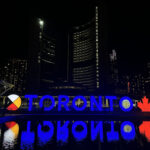An important part of professional baseball history is preserved at the Negro Leagues Baseball Museum in Kansas City, making it well worth the price of a ticket for any fan of the game.
The museum is dedicated to educating visitors on the origins, history and legacy of the Negro Leagues, which existed due to organized baseball’s insistence on segregation in the early 20th century. Despite facing rampant discrimination, Black baseball survived and thrived in places like Kansas City, where the Monarchs remain an enduring symbol.
Though the Negro Leagues slowly faded away after Jackie Robinson broke Major League Baseball’s color barrier in 1947, its history remains a pivotal part of baseball’s journey to where it is today. MLB acknowledged this in recent years, officially integrating Negro League statistics into its historical records in 2024.
In 1990, the Negro Leagues Baseball Museum was founded by a group of former players, including legends Buck O’Neil and Alfred Surratt. The exhibit has changed locations several times over the years, moving into its current location in 1997.
A massive expansion of the facility is in the works, with fundraising for the project well underway. In the meantime, the NLBM in its current state is a humble but powerful representation of the struggle and triumph of the Negro Leagues.
Getting to the Negro Leagues Museum
The Negro Leagues Baseball Museum is located in the historic 18th and Vine district east of downtown Kansas City. The district is well-known as the center of African American life in the city during the early-to-mid 20th century, and several buildings in the area have been designated as historic landmarks.
The museum itself is at 1616 East 18th Street, sharing a building with the American Jazz Museum.
Visitors staying in downtown Kansas City can reach the museum via short drive on surface streets. 18th Street extends into the downtown area. The Paseo, a wide boulevard that runs north-south, also is within a few blocks.
You can also use the local RideKC bus system to get to the Negro Leagues Baseball Museum, as routes 18 and 19 stop just outside.
Free street parking is available and often ample, at least depending on other events going on around the 18th and Vine district. There are also several small paid lots around the neighborhood, most within a reasonable walk.
If you’re in town to see an MLB or NFL game and looking to visit the Negro Leagues Baseball Museum as part of your visit, know that the Truman Sports Complex — where the Royals’ Kauffman Stadium and the Chiefs’ Arrowhead Stadium stand — is about eight miles away via Interstate 70. Be sure to factor in the distance and traffic when planning to see the museum ahead of a game.
For more on visiting Kansas City, check out our Kansas City sports travel guide.
Negro Leagues Baseball Museum tickets and hours
As of 2025, tickets for the Negro Leagues Baseball Museum cost $10 for adults, $9 for seniors and $6 for children ages 5-12. Tickets can be purchased on-site in the museum’s gift shop or online on the Negro Leagues Baseball Museum website.
The Negro Leagues Baseball Museum is typically open from 10 a.m. to 5 p.m. Tuesday through Saturday, and noon to 5 p.m. on Sunday. The museum is closed on Mondays and occasionally for special events. Check the museum’s online calendar to ensure it will be open on the date you wish to visit.
You can also visit the museum as part of a Kansas City attractions pass, which includes admission to numerous sites around the city for one flat fee. It can be purchased in advance on Viator.
Things to see at the Negro Leagues Baseball Museum
The Negro Leagues Baseball Museum isn’t very large as museums go, but it is packed with thought-provoking exhibits and displays. Plan on taking about an hour to absorb and reflect on everything there is to see.
The exhibit that catches most visitors’ eyes first is the “Field of Legends,” featuring 12 bronze statues of Negro Leagues greats positioned on a baseball diamond. The display includes such recognizable legends as Satchel Paige, Buck Leonard, Josh Gibson and Cool Papa Bell.
The Field of Legends is visible immediately upon entering but a partition separates visitors from it; after winding your way through the other exhibits, you’ll have an opportunity to walk among the statues.
Displays are generally arranged in chronological order, covering the history of segregation in organized baseball and efforts to form what eventually became the Negro Leagues.
Newspapers, signed documents, uniforms and other artifacts make up an impressive collection. Several displays also include interactive elements or short films.
One popular display is known as the “Geddy Lee Collection.” Geddy Lee, frontman for the rock band Rush, donated nearly 200 baseballs signed by Negro League and Black baseball greats to the museum in 2008.
Buck O’Neil, a K.C. Monarchs legend and member of the NLBM board until his death at age 94 in 2006, has an exhibit dedicated to him as well, as well as a statue in the Field of Legends.
Other things to see near the museum
The Negro Leagues Baseball Museum is just one of many attractions in the 18th and Vine district worth visiting to get a sense of the cultural pride in the neighborhood.
Just behind the museum is the Kansas City MLB Urban Youth Academy, hosted by the Kansas City Royals. Featuring several diamonds, it often plays host to youth tournaments and camps.
The American Jazz Museum, in the same complex as the Negro Leagues Baseball Museum, is also well worth the visit. The museum, which celebrates the history of jazz music and its importance to African American culture, generally keeps the same hours (it is also closed on Mondays) as the NLBM. The admission structure is also nearly identical: $10 for adults, $9 for seniors and $6 for youths between the ages of 6 and 18.
A block to the west, at the corner of 17th and The Paseo, is a statue memorializing trailblazing jazz saxophonist Charlie Parker, a Kansas City native.
Take a stroll down 18th Street to see some of the street art and historical markers that dot the neighborhood. The Gem Theater, operated by the American Jazz Museum, stands across the street and often holds concerts and other events.
A few blocks to the east, on the corner of 18th and Brooklyn, stands a local dining institution: Arthur Bryant’s, named after one of the fathers of the Kansas City barbecue scene. The restaurant has a fairly large dining room but can get busy, with a line to order out the door, during the lunch rush.
Arthur Bryant’s is a great place to try a K.C. barbecue specialty, the burnt end sandwich.

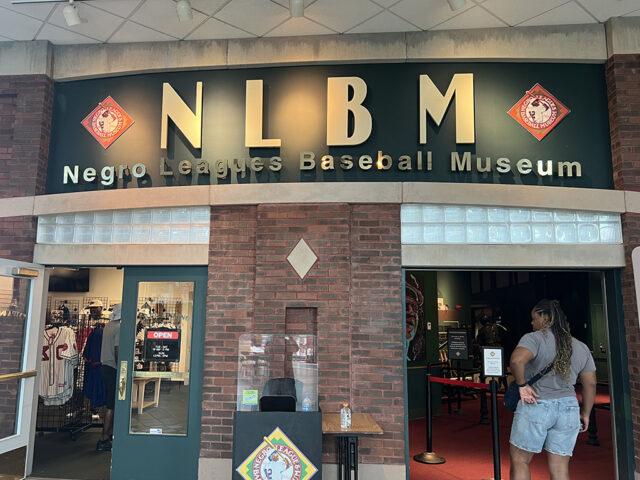
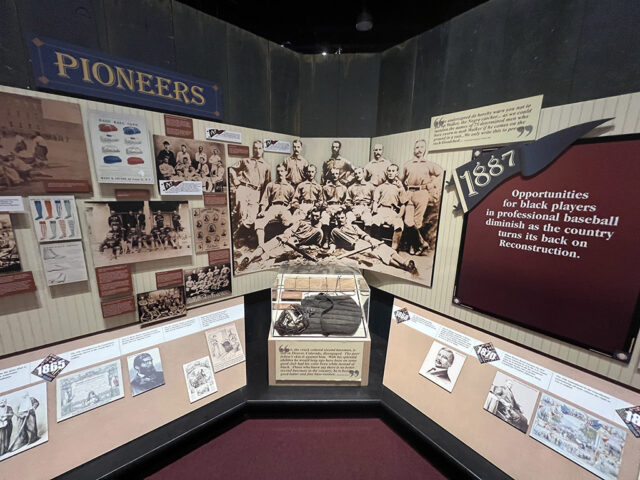
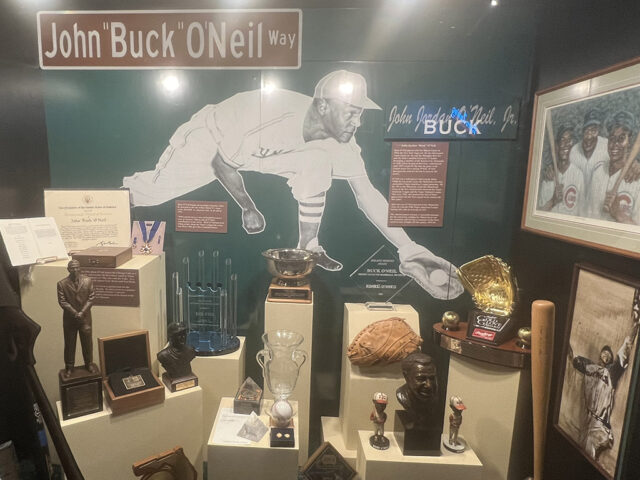

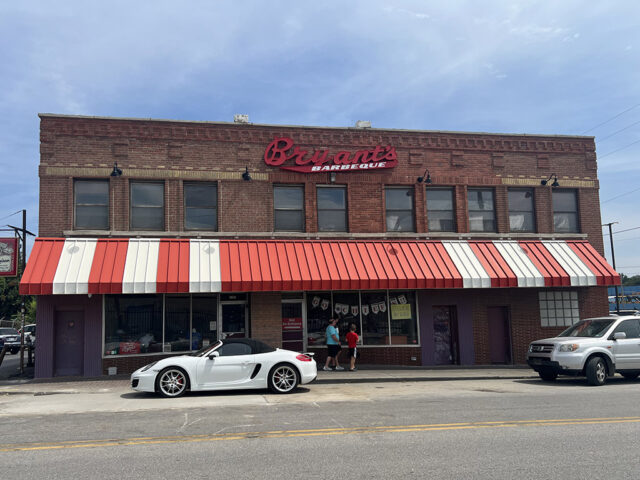
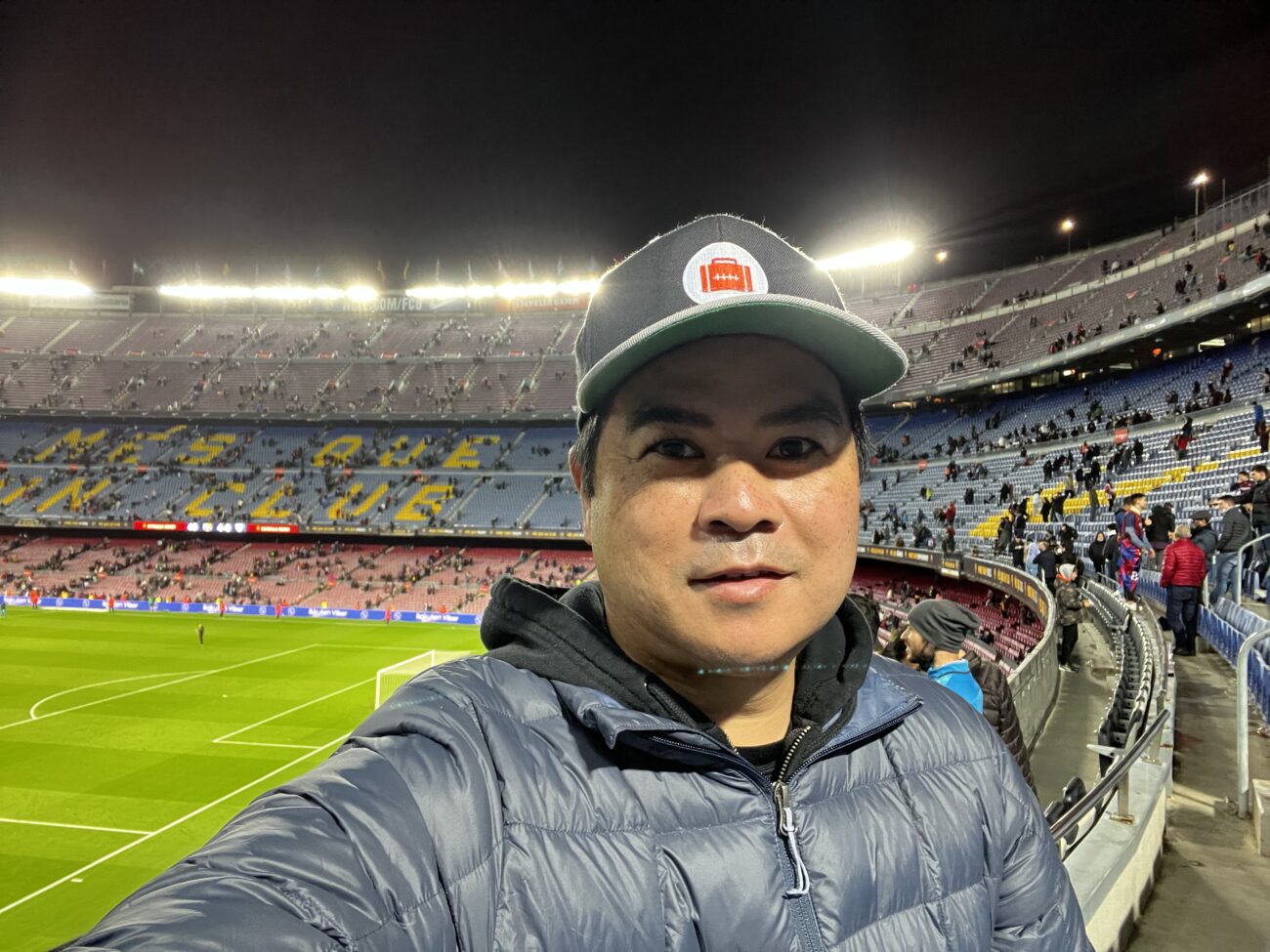 Edward de la Fuente | Itinerant Fan
Edward de la Fuente | Itinerant Fan